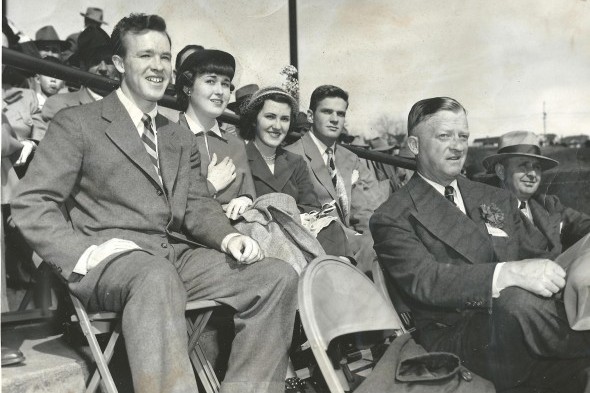
David Eskenazi and Steve Rudman
Roscoe Torchy Torrance, a volunteer in the Student Army Training Corps at the University of Washington, received orders near the end of October, 1918, to report to the Artillery School at Fort Still, OK., ASAP, where, following boot camp, he would be deployed to Europe to aid the American cause in World War I.
But Torrance, bags packed, caught a break days before his scheduled departure: World War I ended when Turkey, followed by Austria-Hungary, capitulated.
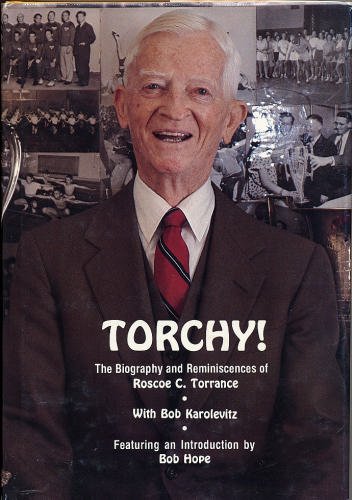
The declaration of armistice not only ended the war, it set in motion one of the most amazing — maybe the most amazing — careers any Seattle man ever fashioned for himself. In Torrance’s case, armistice first enabled him to continue his studies at UW, where he became student body president, an ascent in campus politics that launched Torrances meteoric rise first within the athletic department, later in private business and finally into a vast array of civic affairs.
For seven decades following his 1923 UW graduation, almost nothing happened in Seattle’s athletic realm, pro or amateur, that Torrance didnt instigate, facilitate or influence.
When Torrance entered UW in the fall of 1918, he batched in campus quarters with Claude Jump Hunt, a Gil Dobie disciple and Dobies successor as the schools head football coach. When Torrance died, after having had a hand in the hiring of every football coach (and every athletic director) from Enoch Bagshaw (1921-29) through Jim Owens (1957-74), the Don James era (1975-92) at Washington had just about spent itself.
Between Hunt and James, Torrance became Washingtons ultimate mover and shaker, a can-do social butterfly/dervish so wired into the fabric of Seattle, athletically, politically and socially, that its difficult today to imagine our sporting history without Torrance, or how it would look now if he hadn’t shaped it in manner he did.
Seattle swimmer Helene Madison might not have received the opportunity to win three gold medals in the 1932 Los Angeles Olympic Games if Torrance hadnt made sure she had training and travel expenses (see Wayback Machine: Queen Helene Madison).
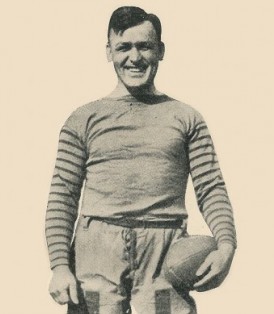
Longacres Race Course opened a year later in part because of work Torrance performed on behalf of the ovals co-founders, Joe Gottstein and William Edris (see Wayback Machine: Joe Gottstein’s Racing Revival).
Emil Sick probably would not have purchased the Seattle Rainiers (see Wayback Machine: Seattle First Citizen Emil Sick) and constructed his namesake ballpark in 1938 if Torrance hadnt lobbied the beer baron to make the buy and build the park — on land Torrance acquired on Sicks behalf.
Without Sick, there would have been no Rainiers as Seattle fans knew them then, and as many boomers recall them fondly today. Without the Rainiers, there would have been no Fred Hutchinson phenomenon (see Wayback Machine: Hutch — A Man And An Award), since it was not only Torrance who signed the future icon, but Torrance who helped negotiate his sale to the Detroit Tigers in one of the biggest Seattle sports swaps in the first half of the 20th century.
Torrance steered Edo Vanni out of a promising UW football career and put him in a Rainiers uniform, and cajoled Hugh McElhenny and Don Heinrich into accepting UW football scholarships. Without Torrance, neither would have played their home games in a stadium that Torrance, as a newly minted UW graduate, helped fund.
Unlike most doers of large civic deeds, Torrance did not emerge from wealth, nor did he accumulate it. Torrance made his mark through sweat, spirit and simple force of personality.
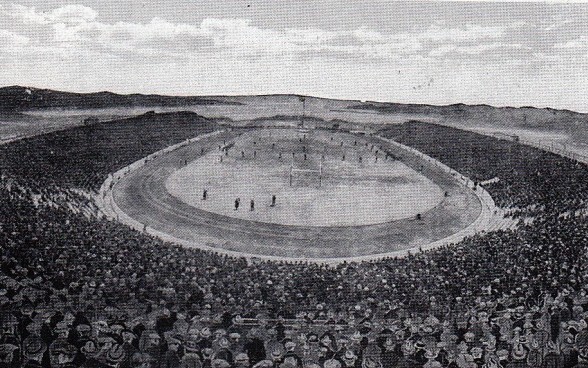
Roscoe Conkling Torrance, born Sept. 2, 1899, in the Whitman County railroad town of Diamond, came from the Northwests original pioneer stock. His mother, Alma Kirby Torrance, died from childbirth complications when Torrance was three, and his father, William Grant Torrance, struggled to raise a large family.
William Torrance eventually moved his clan to Spokane, where the young Torrance attended Longfellow School, delivering groceries and selling the Spokesman-Review to help the family budget.
When Torrance turned 12, his father, determined to become a wheat and alfalfa farmer, relocated his brood to American Falls, ID., where young Torrance discovered his life-long passion and what he hoped would become his professional calling: major league baseball.
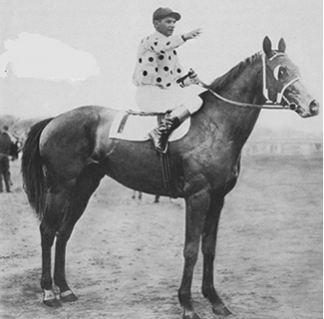
Torrance often shared his dream of becoming the next Roger Peckinpaugh, then the New York Yankees shortstop, with neighborhood pal and transplanted North Dakotan Earl Sande, with whom Torrance roped and rode calves and quarter horses. In turn, Sande shared his dream of becoming a famous jockey.
Torrance became an accomplished shortstop at the collegiate and semi-pro levels, and later a baseball executive, but not the next Roger Peckinpaugh. After leaving American Falls, Sande indeed became one of the world’s greatest jockeys.
He won the Kentucky Derby in 1923 (Zev), 1925 (Flying Ebony) and 1930 (Gallant Fox); the Preakness in 1930 (Gallant Fox); the Belmont in 1921 (Greg Lag), 1923 (Zev), 1924 (Mad Play), 1927 (Chance Shot) and 1930 (Gallant Fox).
In addition to his 1930 Triple Crown, Torrances childhood friend also won the Jockey Club Gold Cup four times, got one ride on Man o’ War (Aug. 20, 1920, Miller Stakes, Saratoga, won by 1 3/4 lengths), entered the U.S. Racing Hall of Fame (1955), and was immortalized by Damon Runyan (best known for his musical, Guys and Dolls) in brief, but enduring verse:
“Gimme a handy
Guy Like Sande
Bootin them winners in!”
After Sande left American Falls, determined to become a famous jockey, the Torrance family returned to Spokane. At Lewis & Clark High, young Torrance played baseball, attempted to play football (too small), and became a school yell king, as well as a bat boy for the Spokane Indians. While leading cheers,Torrance picked up the moniker Torchy he would carry throughout his life.
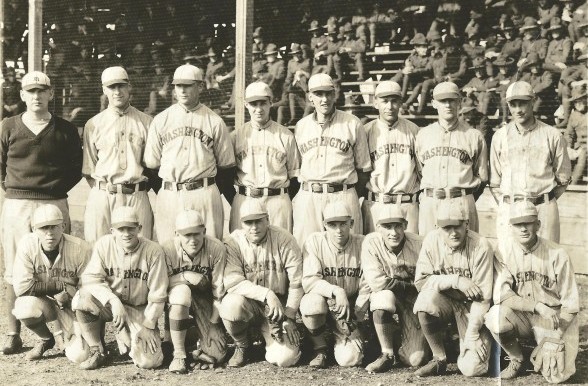
Torchy enrolled at UW in 1918, two years after the fabulously successful Gil Dobie football era (58-0-3) ended, joined the UW baseball team, and wrangled a job in the athletic department first as a property (equipment) manager, then as an assistant trainer under basketball coach Hec Edmundson, and finally as freshman baseball coach and assistant graduate manager under Darwin Meisnest.
The $250 per month Torchy received working under Meisnest spelled the end of his baseball career. The Detroit Tigers wanted to sign Torchy and farm him to their team in the Three-Eye League (Illinois, Indiana and Iowa), but couldnt match Torchys UW wage. Nor could the Tigers overcome the fact that Torchy had become hopelessly smitten with his alma mater.
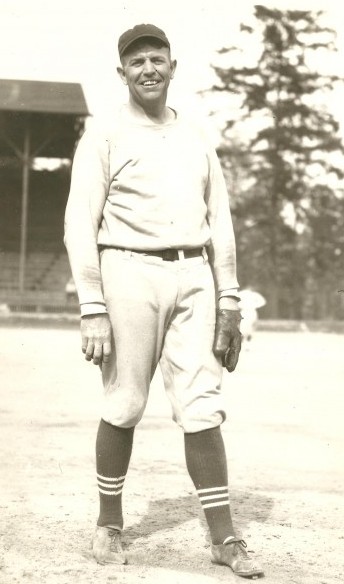
When Torchy became immersed in UW sports administration, Stub Allison ran the football and baseball programs, and would go on to become one of the most successful football coaches in University of California history.
Stub would bet on every game he thought we had a chance of winning, not an unusual thing for coaches or even players to do in those days, Torchy wrote in his biography, published in 1988.
That year (1920) the bookmakers had us as a six-point favorite over Montana, so Stub had me go down to Greens Cigar Store and bet $300 on Washington.
Allison lost his entire wad when Montana won 18-14 at Denny Field, which preceded Husky Stadium, which hosted its first game Nov. 27 (UW vs. Dartmouth), after Meisnest tasked Torchy with leading a fund-raising drive to build the facility.
As assistant graduate manager, Torchy helped football coach Enoch Bagshaw, Allisons replacement, recruit players.
Torchy also led a fund-raising campaign that enabled UW discus thrower Augustus Pope to travel to Paris in 1924 to participate in the Summer Olympic Games, the first instance of Torchys considerable involvement with local Olympic hopefuls and the U.S. Olympic movement.
Torchy oversaw ticket sales for Washingtons appearances in the 1924 and 1926 Rose Bowl games (first two in UW history), the latter contest throwing Torchy into a negotiation with theater owner and sports promoter C.C. Cash and Carry Pyle, who had organized a nationwide — and now famous — tour starring Red Grange of Illinois.
Pyle wanted Washingtons star, George Wilson, to head up a team that would oppose Granges All-Star squad. Torchy worked out a $500 fee for Wilson, whose Wilsons Wildcats faced Grange in the Los Angeles Coliseum in front of 90,000 spectators two weeks after Washingtons Rose Bowl game with Alabama.
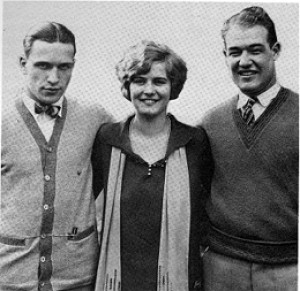
Wilson kicked off to Grange and then went down and tackled him, Torchy wrote.
The Galloping Ghost flew in about three different directions and didnt play any more that day. Later he said it was the hardest hes ever been hit in his life.
Torchy considered Wilson the greatest player ever produced by Washington (even greater than Hugh McElhenny), but lamented Wilson’s fate. “Booze finally got him,” Torchy wrote.
Two years after the Wilson-Grange clash, Torchy raised money that sent Hec Edmundson and two of his track athletes, Steve Anderson and Herman Brix, to the 1928 Amsterdam Olympic Games.
Without Torchy, neither Anderson nor Brix would have had chances to win the silver medals they brought home, Anderson in the 110 hurdles, Brix in the shot put. (Following his athletic career, Brix became a Hollywood actor, first appearing as Tarzan. He made more than 140 films, including “Treasure of Sierra Madre,” with Humphrey Bogart.)
Meisnest gave Torchy the power to hire and fire. One day, a man named Dorsett V. Tubby Graves drove to the UW campus from Montana to check on a job Meisnest had told him about.
I was the only one in the office, wrote Torrance. Meisnest was gone on a fishing trip, so I ended up signing Tubby to a two-year contract.
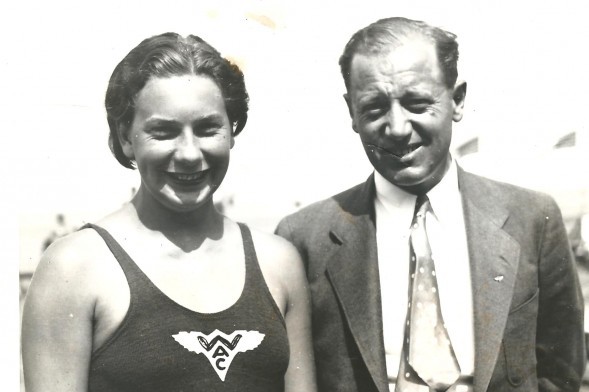
Graves coached the UW baseball team for 24 years and served a stint as athletic director. Washingtons athletic administration building is named after him.
As the 1920s drew to a close, Torchy opted reluctantly — to leave UW for a more lucrative position (he had a young family) with Foster and Kleiser, an outdoor advertising company. But as he did so, and in a vast understatement, Torchy told friends he would become Washingtons biggest off-campus booster.
Torchy succeeded so spectacularly as The No. 1 Husky, as former football coach Don James frequently called him, that James, speaking at Torchys 1990 funeral, said, In all my experience with several universities, I never met anybody like him. I never met a guy anywhere who was so for a university. Ill never forget that guy.
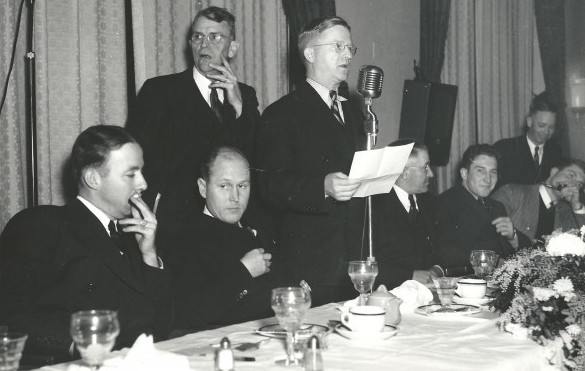
Torchy emerged on the Seattle business scene when downtown optimists formed a club aimed at fostering amateur athletics and promoting physical culture and social entertainment.
The new Washington Athletic Club, which opened Dec. 16, 1930, hired Torchys old UW boss, Meisnest, to lead it. Torchy joined. A life-long joiner, Torchy also enrolled in the club within the club, a group of 100 Republicans and one WAC Democrat that called itself the 101 Club.
Through the 101 Club, Torchy extended his involvement with Olympic sports, first making sure that Seattle swimmer Helene Madison had sufficient funds to train for and compete in the 1932 Olympic Games in Los Angeles.
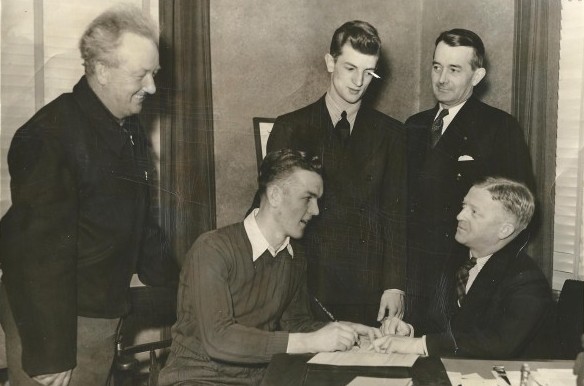
Queen Helene won three gold medals and set two world records. Nearly two decades later, Torchy and the 101 Club sponsored The Kennedy Kids, pairs skaters Peter and Karol, through the 1948 (San Moritz) and 1952 (Oslo) Winter Olympics (silver medal), several World Championships (gold medal, 1950) and nearly a dozen U.S. national competitions (five gold medals from 1948-52).
Two decades after that, Torchy and the 101ers raised funds so that Seattle Pacific distance runner Doris Brown could participate in the World Cross Country Championships in Wales. She won the race, the first of an unprecedented five in that event.
With the Depression raging in the early 1930s, Torrance traded an investment of his time over a five-year period for a one-third interest in the Western Printing Co., set about hustling up some new accounts, and wound up in a partnership with Joe Gottstein, then constructing a thoroughbred race track on an old dairy farm south of Seattle.
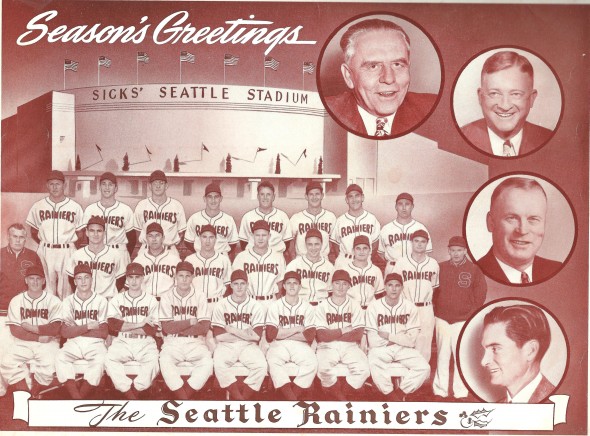
Torchy agreed to handle ticket sales, advertising and parking for the new Longacres oval. Torchy received no salary, but Western Printing got the contract to print the various state forms associated with pari-mutuel racing. Western also printed the tracks daily program.
The track opened in 1933, about the time Torchy began itching to get back into baseball. Torchy figured the way to do that was to find a new owner for the financially struggling Seattle Indians and convince the new bankroller that Torchy was just the man to run the franchise.
So when Torchy began trolling for a man with money, he didnt have to look very hard to locate Sick, a man he knew to be imbued with a profound civic conscience.
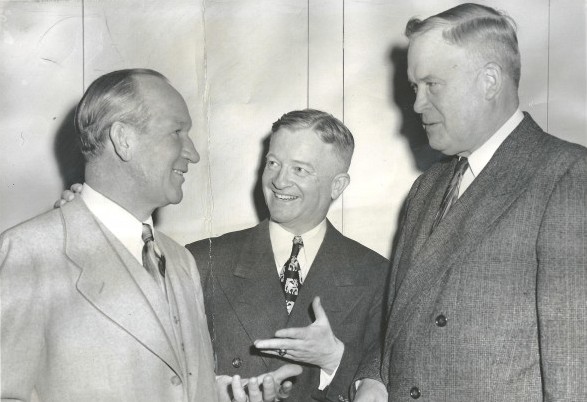
In his 1988 autobiography Torchy, Torrance described what happened next: Emil Sick went to a brewers meeting in New York, where Jake Ruppert, one of the East Coasts leading brewers who also owned the Yankees, suggested that it would be a good asset for Sicks beer business to buy the ball team in Seattle. Dave Beck (Seattle-based union leader) also told him it would be a good idea.
What Torchy didnt mention was that before Sicks meeting with Ruppert, an old friend, Torchy pulled Ruppert aside and whispered in his ear, planting the suggestion that Sick would make a great baseball owner in the West.
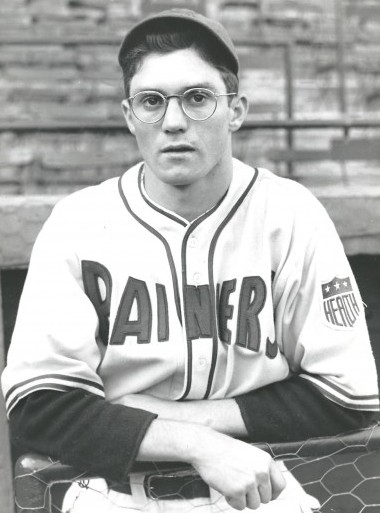
When he (Emil) returned home, he called a meeting and I was one of those he invited, Torchy wrote.
He said he was ready to buy the Indians if he could get the club at a reasonable price. I was made executive vice president.
Although Torchy made only $250 a month for his part-time work with the Indians, who became the Rainiers early in 1938, his company landed the clubs program printing business. Over the next two decades, Torchy had a hand in every important decision the club made.
In addition to signing Hutchinson and Vanni, he signed Earl Torgeson, The Second Earl of Snohomish, and Dewey Soriano, a young pitcher who eventually became the Rainiers GM, among dozens of others.
Torchy missed World War I service because of the armistice, but when World War II broke out, Torchy volunteered to become a Marine, despite the fact he was 42 years old with three children. He came home in 1946 with a Bronze Star with Combat V for his services with the 3rd Marine Division.
Torchy revived his printing business, ventured into a concessions business, picked up where hes left off with the Rainiers and renewed with a vengeance his support of UW athletic teams.
By 1948, one of Torchys schoolmates from Lewis and Clark High, Harvey Cassill, had become UW athletic director, at Torchy’s suggestion. A can-do-guy in the Torchy mold, Cassill became determined to make UW athletics relevant nationally.
To that end, Cassill engaged Notre Dame in a home-and-home football series, the first between the schools, landed the 1949 and 1952 Final Fours, and pushed for the construction of a roofed upper deck on the south side of Husky Stadium, which initially was referred to as “Cassill’s Folly” because fans were scared to sit at such heights above the playing field.
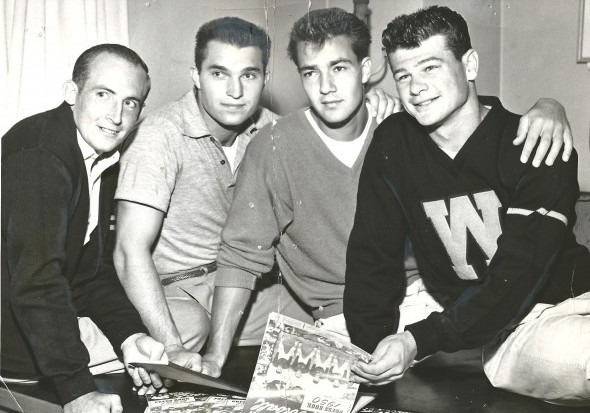
Thanks to Torchy, Cassill also landed two of the most significant athletes in UW history, running back Hugh McElhenny and quarterback Don Heinrich.
Don was the quarterback for Bremerton High, which won the state championship, Torchy wrote. “After we got him, I put him to work on odd jobs at the Western Printing Company.
“As for McElhenny, I went down to Compton, CA., and visited with Hugh and his parents. I got along real well with his dad, who was a little shorter than I was, and his mother, a very lovely person. We had Hugh over to Palm Springs and did our best to keep ahead of the other coaches until we finally signed him up in Seattle.
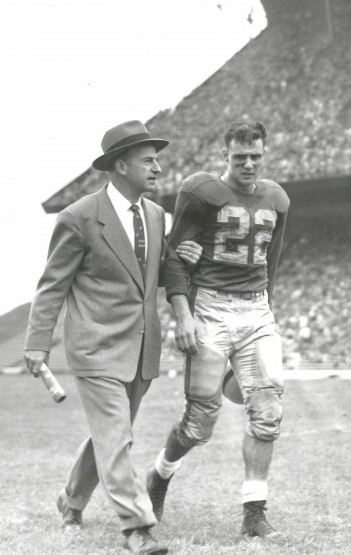
I used to look forward to seeing Torchy come into the locker room after a game, McElhenny admitted years later. Wed shake hands and when hed let go, thered be $25 for every touchdown I made. For some reason, he didnt show up after the Washington State game (1950) when I scored five times.
McElhenny ultimately entered the College Football Hall of and Pro Football Hall of Fame. Heinrich, a two-time All-America, also made the College Football Hall of Fame.
Throughout the 1950s, Torchy became a self-appointed UW recruiter, and assumed the task of raising funds and finding jobs to help Husky athletes get through school.
To facilitate this process, Torchy assembled a group of prominent downtown businessmen, first called the Husky Club, later The Greater Washington Advertising Association.
The GWAA included about 75 individuals who provided money, jobs, or both to scores of UW athletes, including football players Dean Rockey, Sam Mitchell, Dick Sprague and Luther Carr, and basketball players Joe Cipriano and Dean Parsons.
I organized a group — mostly of downtown businessmen — with the goal of putting Washington back on the athletic map as well as the academic one,” Torchy said. “There was nothing devious about our organization. The leading citizens in our community participated in it, and it was of general knowledge to the newspapers because Charles B. Lindeman of the Post-Intelligencer and Seattle Times executives all contributed to it.
We had nothing to do with the actions of the coaches. We never told them who to play, when to play or what athletes to go after. Our purpose was to support the program and the kids.
“The athletes were worrying all the time about where they were going to get their next dollar. There’s no way in the world they can play football or basketball or baseball or anything else.”
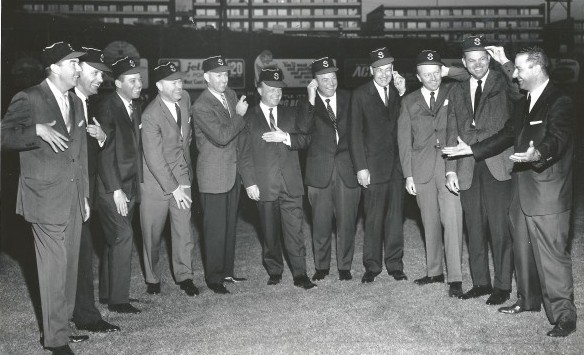
A source of great pride to Torchy, the GWAA became one of his worst career nightmares when, in 1956, following Cassills axing of football coach Johnny Cherberg, Cherberg disclosed that the GWAA operated a slush fund that paid UW athletes more than they were entitled to earn.
A six-page article in Sports Illustrated, headlined Boosters Mess It Up At Washington, said, The football fortunes of the Huskies mean a lot to Seattle and to Torchy Torrance, the citys hustling builder-upper. This is a report on how he almost loved his favorite team to death.
S-I labeled Torchy Washington footballs leading sugar daddy, and quoted several unidentified players to the effect they had received everything from automobiles to free theater tickets and monthly paychecks of as much as $175 per month.
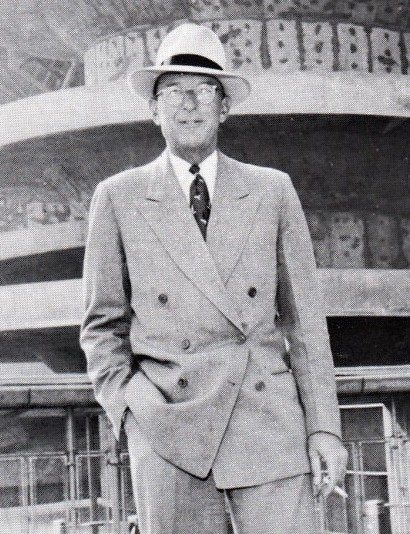
The S-I piece also noted, Now and then, Torchy sees a chance to make an extra pile for his (slush) fund, such as an exhibition pro football game last summer between the New York Giants and San Francisco 49ers. Torchy talked the teams into coming to Seattle. He sold the directors of Greater Seattle Inc. on the idea of sponsoring the show. He persuaded university regents to lend their stadium for 15 percent of the gate.
It was a whopping success. Each team made $36,856; the Associated Students of the University of Washington received $28,361 for stadium rental; Greater Seattle Inc. turned a profit of $7,021. After taxes, there was $28,000 left over, so Torchy, by previous arrangement with Greater Seattle Inc. (to which Torchy also belonged) tucked it into the Greater Washington Advertising Fund, the purse he uses to pay Husky athletes.
Torchy considered many of the accusations and charges untruthful, and vehemently denied that the GWAA had made a windfall. But on May 6, 1956, the Pacific Coast Conference banned all UW athletic teams from participating in any championships for two years, which had two unintended consequences, the first one spectacular, the second significant in the long run.
Banned from competing for a national championship in rowing, UW oarsmen instead accepted an invitation to compete in Londons Henley Royal Regatta and subsequently in a match race with the world champion Trud Club of Moscow. In one of the great upsets in U.S. sporting history, the Huskies beat the Russians on their own reservoir.
The successful exhibition game between the 49ers and Giants, which in 1955 employed McElhenny (San Francisco) and Heinrich (New York), along with several others, placed Seattle on the NFLs radar as a potential site for an expansion franchise (see Wayback Machine: Hugh McElhenny & The Kings), finally awarded in 1974.
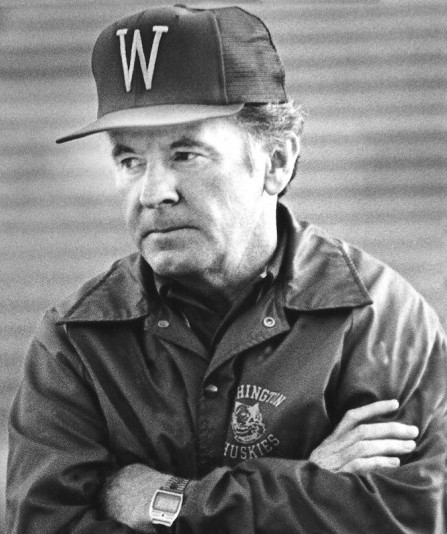
Torchy served as president of Greater Seattle Inc. from 1952-55. The organization — another group of downtown do-gooders — had been formed to help Seattle salute its 100th anniversary in 1951, a celebration which became the genesis of Seafair (Torchy became a major force in its creation), which became the genesis of the 1962 Seattle Worlds Fair, whose official hospitality chairman was Roscoe Conkling Torchy Torrance.
In addition to his heavy involvement in UW and Olympic sports, running his own business, Torchy found the time to serve as state chairman for the March of Dimes, served on many boards, including the Salvation Army, Northwest Hospital and American Legion (commander of Seattle Post Number 1). He also devoted time to the Marine Corps Reserve.
Torchy had a number of competitive passions (where he found the time to indulge them remains a mystery), poker among them. He played regularly after he joined the Seattle Press Club. He loved golf and played many rounds with 50-year friend Bob Hope, whom Torchy met when Hope entertained U.S. troops during World War II, and Spokane native Bing Crosby, whose wife once dated Torchy.
For a while, Torchy invested in a few horses that he campaigned at Longacres. On June 22, 1983, 50 years after he helped Joe Gottstein launch the track, Major Torchy, trained by Craig Roberts and with Jorge Aragon up, won a 6 ½-fulong race in 1:18/1.
After Torchy died Nov. 24, 1990, of congestive heart failure at the age of 91, his funeral service drew more than 300 to University Congregational Church, where the Rev. Dale Turner said, He was one of the most positive, outgoing individuals we have ever known, a man who never forgot his friends.
Speakers at Torchy’s funeral included Heinrich, whom Torrance had recruited to Washington, and James.
“He never asked for anything, James told the assembled. He only wanted to know what he could do to help.
Said Bob Hope, who wrote the introduction to Torchy’s autobiography: “I’m amazed at the action Torchy packed into his life. It just seems impossible.”
—————————————
Many of the historic images published on Sportspress Northwest are provided by resident Northwest sports history aficionado David Eskenazi. Check out Davids Wayback Machine Archive. David can be reached at (206) 441-1900, or at seattlesportshistory@gmail.com

16 Comments
I was a student at the UW during the Heinrich/McElhenny days and witnessed what happened
after John Cherberg blew the whistle on Torrance’s slush fund. Several Husky players lost their eligibility and the university was marked for several years afterward.
Torrance loved the Huskies and Seattle and was a classic booster of his period. We should not lose sight of the fact, though, that he sometimes bent the rules. It was said of Hugh McElhenny, for instance, that”he was the first professional player to have his pay cut” after joining the 49ers from the Huskies. During his time at the UW, he drove a red convertible which no ordinary student could afford.
Hugh indeed took a “cut” to sign with the San Francisco 49ers. But he was no different than many good/great players of his era.
I was a student at the UW during the Heinrich/McElhenny days and witnessed what happened
after John Cherberg blew the whistle on Torrance’s slush fund. Several Husky players lost their eligibility and the university was marked for several years afterward.
Torrance loved the Huskies and Seattle and was a classic booster of his period. We should not lose sight of the fact, though, that he sometimes bent the rules. It was said of Hugh McElhenny, for instance, that”he was the first professional player to have his pay cut” after joining the 49ers from the Huskies. During his time at the UW, he drove a red convertible which no ordinary student could afford.
Hugh indeed took a “cut” to sign with the San Francisco 49ers. But he was no different than many good/great players of his era.
Thanks for another fascinating story.
Thanks for another fascinating story.
I remember Frank Gifford saying, in the midst of the NCAA troubles in the early 90s, that the Huskies had been doing such things since the days of Hugh McElhenny. Having grown up in SoCal with a father that attended USC, I heard stories of OJ having a student job shoveling snow at the Colliseum. I wonder what Frank’s job was, forest fire spotter?
I attended UPS in the late 70s when they had a pretty decent football program and the basketball program won the D-2 national championship. The athletes always had cars that seemed a little nicer than the average student. Goes on at all levels I guess.
Different time back then. The Husky scandal led to the dissolution of the old Pacific Coast Conference, the formation of the AAWU and eventually the Pad-8, which became the Pac-10 and Pac-12. Wouldn’t be surprised that O.J. shoved snow at the Coliseum Former basketball player Artis Gilmore, playing for Jacksonville U., worked at a gas station that din’t exist.
Remember Artis Gilmore? While at Jacksonville, he worked at a service station that didn’t exist.
I remember Frank Gifford saying, in the midst of the NCAA troubles in the early 90s, that the Huskies had been doing such things since the days of Hugh McElhenny. Having grown up in SoCal with a father that attended USC, I heard stories of OJ having a student job shoveling snow at the Colliseum. I wonder what Frank’s job was, forest fire spotter?
I attended UPS in the late 70s when they had a pretty decent football program and the basketball program won the D-2 national championship. The athletes always had cars that seemed a little nicer than the average student. Goes on at all levels I guess.
Different time back then. The Husky scandal led to the dissolution of the old Pacific Coast Conference, the formation of the AAWU and eventually the Pad-8, which became the Pac-10 and Pac-12. Wouldn’t be surprised that O.J. shoved snow at the Coliseum Former basketball player Artis Gilmore, playing for Jacksonville U., worked at a gas station that din’t exist.
Remember Artis Gilmore? While at Jacksonville, he worked at a service station that didn’t exist.
While reading this (another great Wayback piece, BTW), the only person in recent decades I could think of who seemed to have Torchy’s energy and drive in Seattle sports/entertainment is Bob Walsh (Paul Allen buys things, but he doesn’t get very personally involved), but even Walsh didn’t have the kind of omnipresence Torchy did. He was one-of-a-kind.
Bob Walsh is fascinating in his own right, but operated in a far different athletic environment than Torchy, who was, as you mentioned, one of a kind. I don’t think a guy like Torchy could exist today. Thanks for reading.
While reading this (another great Wayback piece, BTW), the only person in recent decades I could think of who seemed to have Torchy’s energy and drive in Seattle sports/entertainment is Bob Walsh (Paul Allen buys things, but he doesn’t get very personally involved), but even Walsh didn’t have the kind of omnipresence Torchy did. He was one-of-a-kind.
Bob Walsh is fascinating in his own right, but operated in a far different athletic environment than Torchy, who was, as you mentioned, one of a kind. I don’t think a guy like Torchy could exist today. Thanks for reading.